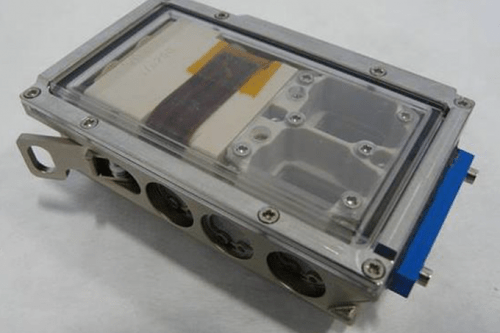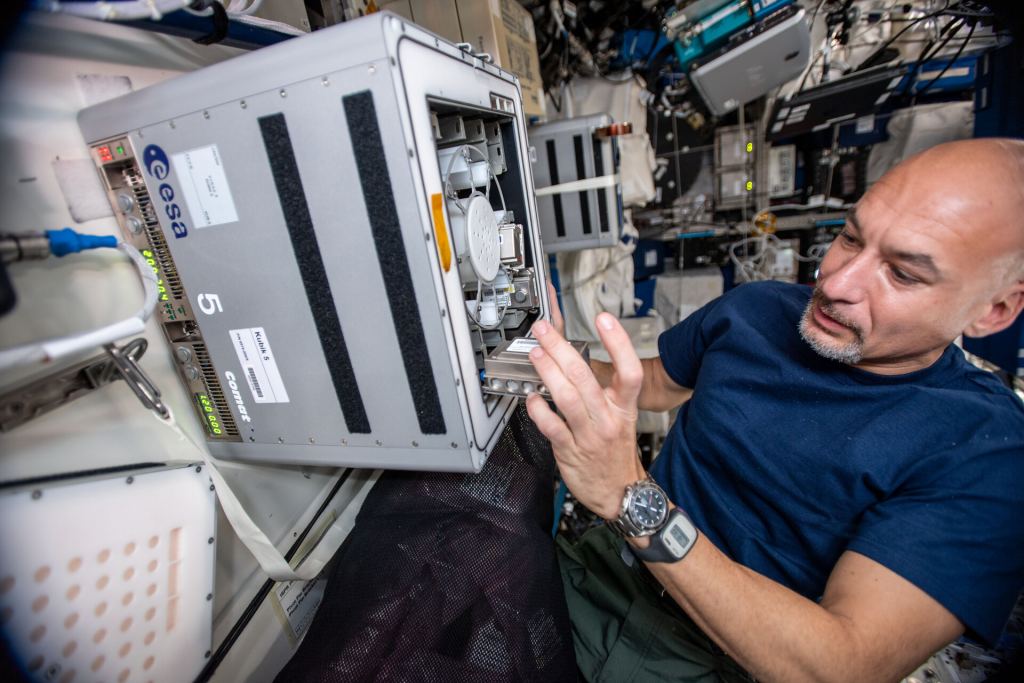Mining is traditionally thought of as an activity that utilizes picks and shovels, or in more modern times, huge machines that can tear apart entire mountainsides in minutes. Industrial might isn’t the only way to rip apart rock though. A scalable and much more environmentally friendly way to access the materials mining seeks to extract is to use microbes. Such techniques are already widely used in terrestrial mining operations. But recently, a team led by the University of Edinburgh have launched an asteroid mining experiment using microbes on the International Space Station (ISS).
The experiment, known as BioAsteroid, is part of the larger Bioreactor Express Programme. That program is an effort to exploit the commercial potential of the ISS using biochemical and biological experiments. It utilizes the KUBIK incubator, which is a permanently installed feature of the ISS that is run by the European Space Agency and its commercial partner, Kayser Space.

Credit: University of Edinburgh
BioAsteroid itself is an experiment to assess the potential for bacteria to be used to turn rocks found on asteroids into useful materials. Specifically the experimental capsules are filled with asteroid rock and a biological slurry that will be introduced to the rock once they reach the microgravity of the ISS. The material those microbes are attempting to unlock range from aluminum for building habitats to oxygen for use in rocket fuel.
Focusing on those useful materials might be novel, but the BioAsteroid experiment isn’t the first biomining experiment performed on the ISS. An earlier experiment, called BioRock, had its results recently published in Nature. It focused on rare earth element extraction, rather than the more generally useful materials found in BioAsteroid’s rock. That experiment found that, while microgravity and simulated Mars gravity did put a damper on the resource recovery output of the bacteria under test, the biological breakdown of the material still happened, albeit at a slower pace.

Credit: ESA
The pace of resource extraction is a critical data point of the BioAsteroid experiment as well. Additionally, the team will be looking at the formation of any biofilms that occur in the experiment, as the formation of these bacterial supercolonies is still little understood in microgravity.
No matter whether biofilms form or not, the most interesting data will be whether or not the bacteria are able to extract useful amounts of materials from asteroids. The bacteria itself, if engineered correctly, could be grown to exponentially speed up the processing of rocks in vast vats of the biological slurry similar to that used in the BioAsteroid experiment. If successful could finally kickstart a race to extract abundant resources available on both near Earth asteroids and those farther afield.
Credit: Anton Petrov Youtube Channel
The first step in understanding whether the experiment will provide that spark will come soon. It successfully launched on SpaceX’s 21st cargo mission on December 6th. It will take a few months for the experiment to run its course, and even longer for the research team to collect and analyze their findings. But when they do, they may be pushing a start button on one of the greatest gold rushes in human history – and it may well be driven by microbes.
Learn More:
UK Government – Biomining study could unlock future settlements on other worlds
University of Edinburgh – Launch of BioAsteroid experiment to space station
Electronics Weekly – BioAsteroid Launches Edinburgh University into biomining experiment
Lead Image Credit: Preparing Samples by C. Cockell

